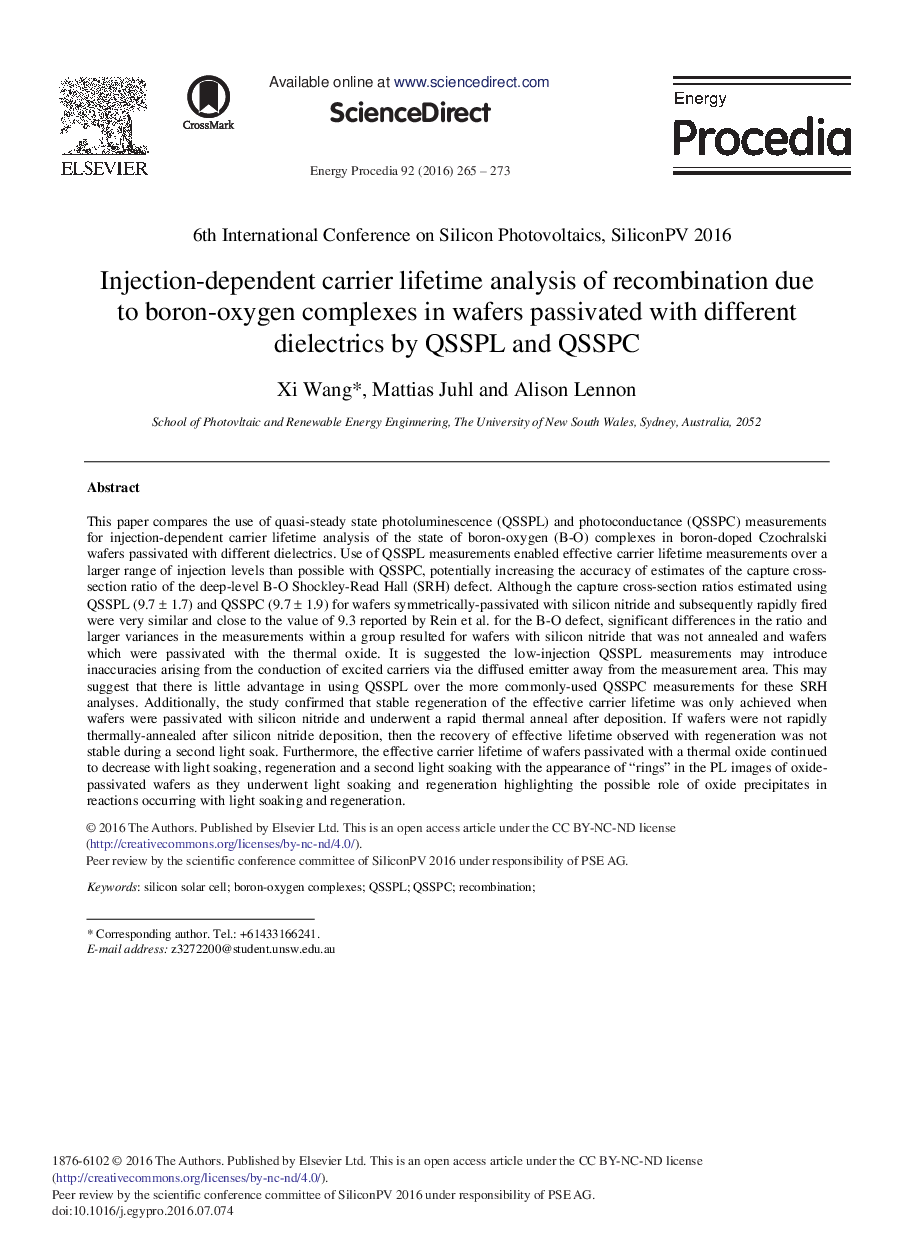| Article ID | Journal | Published Year | Pages | File Type |
|---|---|---|---|---|
| 5446587 | Energy Procedia | 2016 | 9 Pages |
Abstract
This paper compares the use of quasi-steady state photoluminescence (QSSPL) and photoconductance (QSSPC) measurements for injection-dependent carrier lifetime analysis of the state of boron-oxygen (B-O) complexes in boron-doped Czochralski wafers passivated with different dielectrics. Use of QSSPL measurements enabled effective carrier lifetime measurements over a larger range of injection levels than possible with QSSPC, potentially increasing the accuracy of estimates of the capture cross-section ratio of the deep-level B-O Shockley-Read Hall (SRH) defect. Although the capture cross-section ratios estimated using QSSPL (9.7 ± 1.7) and QSSPC (9.7 ± 1.9) for wafers symmetrically-passivated with silicon nitride and subsequently rapidly fired were very similar and close to the value of 9.3 reported by Rein et al. for the B-O defect, significant differences in the ratio and larger variances in the measurements within a group resulted for wafers with silicon nitride that was not annealed and wafers which were passivated with the thermal oxide. It is suggested the low-injection QSSPL measurements may introduce inaccuracies arising from the conduction of excited carriers via the diffused emitter away from the measurement area. This may suggest that there is little advantage in using QSSPL over the more commonly-used QSSPC measurements for these SRH analyses. Additionally, the study confirmed that stable regeneration of the effective carrier lifetime was only achieved when wafers were passivated with silicon nitride and underwent a rapid thermal anneal after deposition. If wafers were not rapidly thermally-annealed after silicon nitride deposition, then the recovery of effective lifetime observed with regeneration was not stable during a second light soak. Furthermore, the effective carrier lifetime of wafers passivated with a thermal oxide continued to decrease with light soaking, regeneration and a second light soaking with the appearance of “rings” in the PL images of oxide-passivated wafers as they underwent light soaking and regeneration highlighting the possible role of oxide precipitates in reactions occurring with light soaking and regeneration.
Keywords
Related Topics
Physical Sciences and Engineering
Energy
Energy (General)
Authors
Xi Wang, Mattias Juhl, Alison Lennon,
